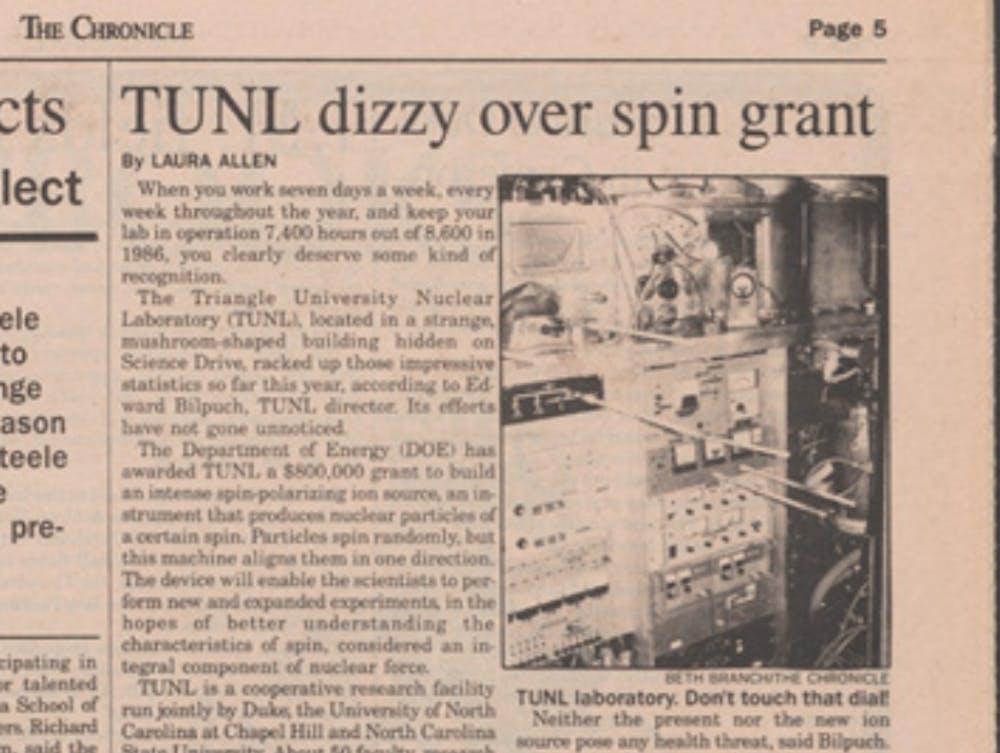Editor's note: This story is the 11th entry in a series called Flashback, which The Chronicle will be running online weekly through the end of the summer. We welcome readers' input about old stories they would like to see featured.
At the height of the atomic age 50 years ago, construction was underway to build a nuclear lab on Duke’s campus.
In 1965, the U.S. Atomic Energy Commission awarded $2.5 million to Triangle Universities Nuclear Laboratory—a tripartite consortium run by Duke, University of North Carolina-Chapel Hill and North Carolina State.
With that money, TUNL bought a tandem Van de Graaff accelerator and a cyclotron, which were to be housed behind the Physics building at Duke. Construction for the lab finished in December 1968.
On July 31, 1986, more than 15 years later, The Chronicle announced in the annual Send-Home edition that TUNL had received an $800,000 grant from the U.S. Department of Energy.
“When you work seven days a week, every week throughout the year, and keep your lab in operation 7,400 hours out of 8,600 in 1986, you clearly deserve some kind of recognition,” reporter Laura Allen wrote in the article. “The Triangle University Nuclear Laboratory (TUNL), located in a strange, mushroom-shaped building hidden on Science Drive, racked up those impressive statistics so far this year, according to Edward Bilpuch, TUNL director. Its efforts have not gone unnoticed.”
TUNL would use the grant to build an “intense spin-polarizing ion source,” Allen wrote.
“Particles spin randomly, but this machine aligns them in one direction,” she stated. “The device will enable the scientists to perform new and expanded experiments, in the hopes of better understanding the characteristics of spin, considered an integral component of nuclear force.”
Thomas Clegg, a UNC physics professor, oversaw the lab's construction and designed the underlying physics of the ion source, while Russell Roberson, a Duke physics professor, developed the machine's computer interface and electronic controls.
Spearheaded by professors from UNC and Duke, the project embodied the collaborative nature of the TUNL consortium.
Once it was completed, the lab would be among the most "sophisticated" in the country at that time, Clegg said.
Get The Chronicle straight to your inbox
Signup for our weekly newsletter. Cancel at any time.

